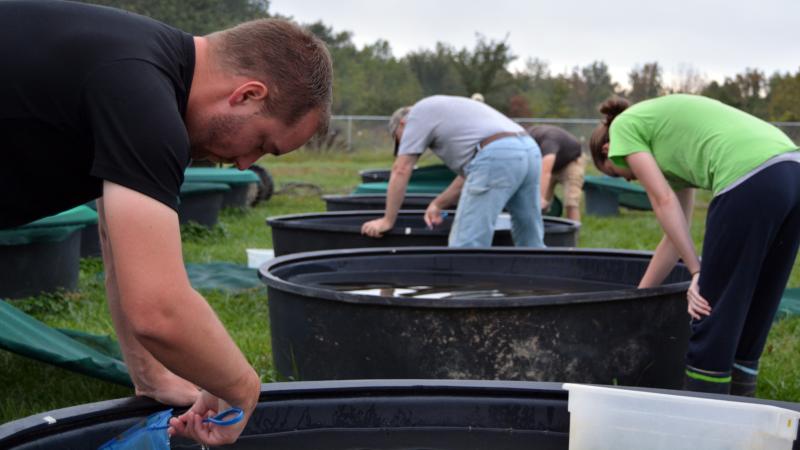April 5, 2017

[The Jefferson Project at Lake George is conducting ongoing research into how human activities may be affecting the lake. This guest blog by Bill Hintz, a post-doctoral research associate in the lab of Jefferson Project Director Rick Relyea, summarizes recent research published in the journal Ecological Applications. The Jefferson Project is a collaboration between Rensselaer, IBM Research, and The FUND for Lake George, founded to develop a new model for technologically enabled environmental monitoring and prediction to understand and protect the Lake George ecosystem and freshwater ecosystems around the world.]
What did you want to know?
We wanted to know how the most commonly used road salt, sodium chloride, affects organisms found in lake food webs, which contribute to important ecosystems services including water clarity, water quality, recreation, and fishing. Because species in a food web are all interconnected, an impact on one species can have a domino effect on other species in the food web. For example, if road salt affects a species in one part of the food chain (e.g., fish or zooplankton), this may initiate a chain of events that indirectly affects many other species. Scientists call this a “trophic cascade.” In our study, we wanted to know if road salt at different concentrations can trigger such a chain of events in lake food webs.
How did you go about it?
We conducted a large-scale, outdoor experiment using 40 tanks that each contained 275 gallons of Lake George water. To each tank, we added 200 pounds of sand and a layer of leaves to mimic the bottom of a lake. We added common species that live in Lake George including different species of algae, zooplankton, fingernail clams, snails, crustaceans, and fish. We then exposed the tanks to one of five concentrations of road salt: 15, 100, 250, 500, and 1000 milligrams of chloride per liter. Each salt concentration was replicated four times and the experiment ran for 83 days.
What did you find out?
We discovered that high salt concentrations in the presence of fish caused dramatic changes in the food web including a large reduction in the abundance of zooplankton, triggering a trophic cascade. Given that zooplankton eat algae, the decline in zooplankton due to salt caused an increase in algae, which reduced water clarity. Moderate to high salt concentrations also reduced the abundance of filamentous algae, which can be important habitat for many lake organisms. At the highest salt concentration, we observed a 92 percent reduction in the abundance of one crustacean species (i.e., amphipods), which are an important food source for many fish. High salt concentrations also increased the mortality of fingernail clams and a non-native snail species, but had positive effects on a native snail species. The two highest salt concentrations had positive effects on the growth of the fish. In summary, road salt caused widespread impacts throughout the food web, but these effects only occurred at concentrations of salt that were more than 10 times higher than the salt concentrations currently found in Lake George.
The research, titled “Salinization triggers a trophic cascade in experimental freshwater communities with varying food-chain length,” can be found with the DOI: doi/10.1002/eap.1487/
